The Renaissance takes its name from the French word for “Rebirth.” No other word captures the Renaissance period better than a total Rebirth of Europe.
The Renaissance was a period between c 1300 – 1600 AD known for explosive social, cultural, and scientific developments, which brought massive changes and groundbreaking inventions in fields like the arts, physics, astronomy, economics, and so much more.
The Renaissance was the transitional phase in Europe between medieval and modern times. It is perhaps the most crucial development phase in European history due to its tremendously positive political, socio-cultural, and scientific impact on European people.
This remarkable era marked the beginning of a revolution that significantly bolstered the economy of Europe.
Most of the inventions of the renaissance period laid the foundations for many scientific developments that shaped much of the modern world today.
This article discusses 5 of the most important inventions of the Renaissance.
The Flush Toilet
The average person gets rid of approximately 400 grams of feces daily. Considering that the world population just crossed 8 billion people, this translates to a massive load of poop being passed out daily. Yet, this isn’t something we have to worry much about, thanks to a wonderful invention called the flush toilet.
Thousands of years ago, feces was being passed out in the open, which led to the prevalence of several diseases like dysentery, typhoid, cholera, and other ailments, which led to millions of deaths.
Although, some relatively civilized cities like Rome had communal facilities for disposing of human excreta.
Ancient Roman societies, for example, had a couple of public toilets, which were in the form of long open benches which emptied into a sewer system that disposed of the waste into the river Tiber called the Cloaca Maxima.
However, Rome’s Cloaca Maxima sewage system was not adequate for everyone. Most of the roman population got rid of their waste by putting it in a sack or pot and throwing it right into the streets.
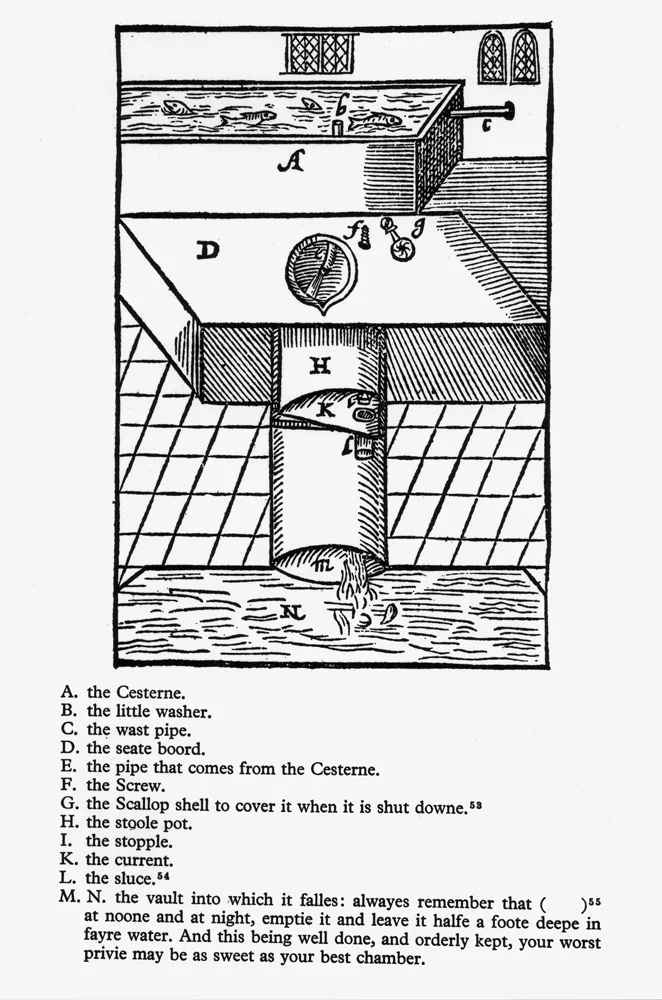
This persisted for a long time until a magical chair called the Flush toilet was invented, which made all that nastiness go away in the most inventive fashion.
The flush toilet was invented by Sir John Harrington in 1596. Using his Ajax device, made up of a two-foot plus deep waterproof bowl, the toilet bowl was emptied with water from an overhead tank.
Queen Elizabeth, I was impressed with Harrington’s novel discovery and had it installed in the Royal Palace.
In 1775, Alexander Cumming revolutionized Sir John Harrington’s novel invention by adding a water-filled S-Trap to block the foul-smelling and disease-causing sewer gas from rising up the pipes and entering households.
Many modern flush toilets still being used today are based on Cumming’s 1775 design.
The flush toilet remains an incredible invention that has tremendously improved health, human hygiene, and general sanitation throughout history.
The Parachute
While French physicist Louis-Sébastien Lenormand is credited for inventing the first practical parachute in the late 18th century, the earliest prototype of a parachute can be traced back to the renaissance period.
Legendary Renaissance artist and polymath Leonardo da Vinci drew up the first prototype for the first parachute, about 200 years before Lenormand’s invention in his famous notebook, the Codex Atlanticus, which dates back to 1485.
This notebook contained elaborate designs and writings on a wide range of specializations.
Although Leonardo was constrained by the technological limitations of his time, Da Vinci’s flying instruments demonstrated a scientific, creative, and innovative mind that was far ahead of its time.
Leonardo Da Vinci’s keen interest in aviation resulted in him making numerous drawings of hypothetical flying instruments in his Codex Atlanticus.
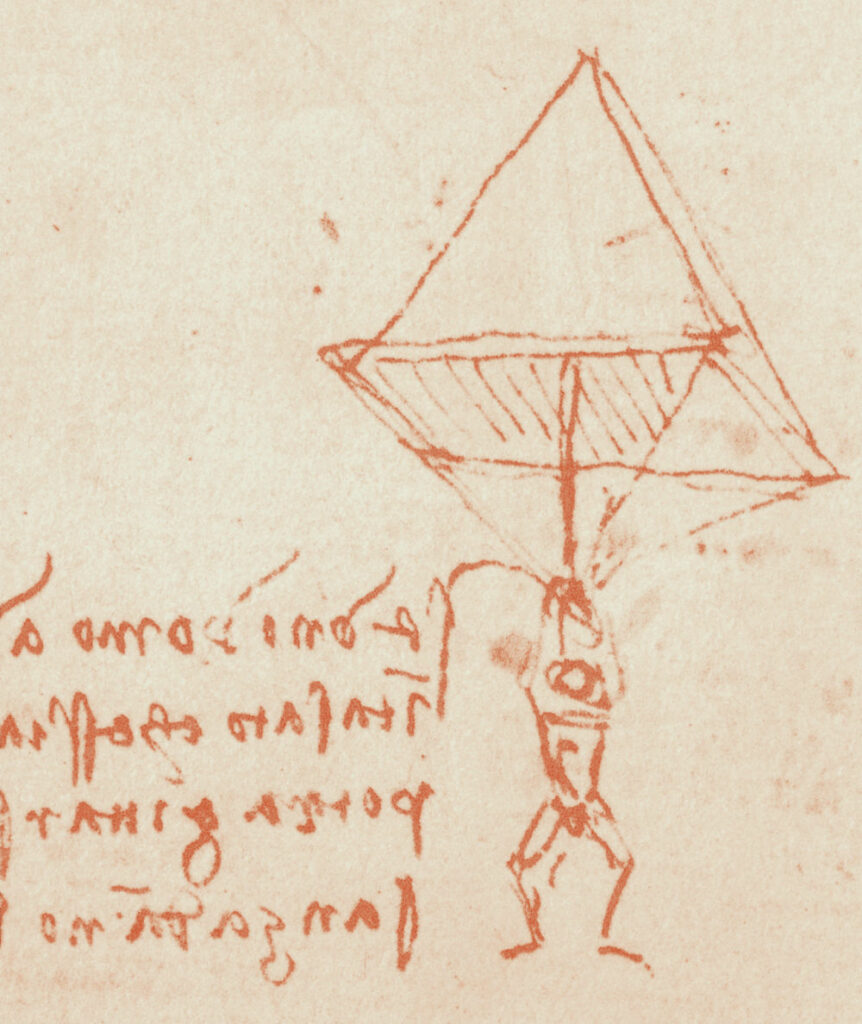
Amongst these designs was something that looks and functions unlike anything that existed during Leonardo’s time, The parachute. The sketch depicted a person descending from the center of a pyramid-shaped canopy-like instrument.
Da Vinci also gave detailed information about how the parachute should be constructed, stating that a man can jump from any great height without risking being seriously injured if he used a certain amount of linen supported by a wooden frame with poles rising to a certain point.
It took five centuries to find someone to test the functionality of Da Vinci’s parachute.
In 2000, British skydiver Adrian Nicholas successfully tested a prototype based on Da Vinci’s earlier parachute design.
Proving that Da Vinci had indeed invented the world’s first parachute. Parachutes have been used to save the lives of countless people across the globe.
The Compound Microscope
Hans and Zacharias Janssen, two Dutch spectacle makers, jointly hold credit for the invention of the microscope. Hans is the father of Zacharias, and both father and son had a keen interest in making eyeglasses and frequently worked on improving sight.
While experimenting with lenses, Hans and Zacharias put a lens on each end of a tube one day and made a fantastic discovery.
They found that these combined lenses made objects on the end end of the tube look significantly larger than their original size, much bigger than with a magnifying glass.
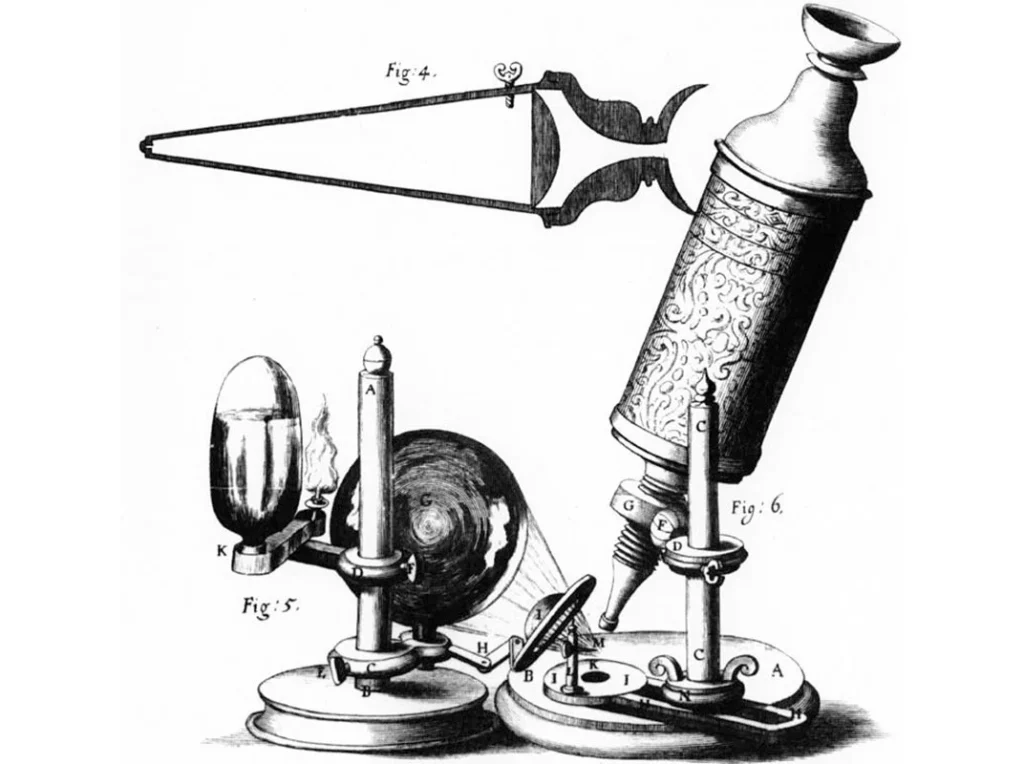
In the 1660s, English scientist Robert Hooke using the compound microscope started examining all kinds of objects; he drew these objects and put them in a book called Micrographia. Hooke used this discovery to identify dead plant cells in 1665.
In the 1670s, another Dutchman named Anton van Leeuwenhoek improved on the Janssens’ invention by using stronger lenses to build the microscope that was considered the first practical microscope.
Anton developed a method of grinding thin glass lenses into a lens that could magnify objects several hundred times.
Anton van Leeuwenhoek was the first to use his microscope to see and describe bacteria in 1674. He was also the first to identify yeast, sperm, and blood cells and witnessed blood circulation through the capillaries.
The Telescope
Over four centuries ago, Galileo Galilei, often regarded as the father of modern science, looked at the night sky and saw the Milky Way for the first time through a telescope.
Galileo identified the Milky Way as an immeasurable number of stars closely packed together to form a hazy cloud of light that the ordinary human eye cannot visibly identify. This led to the recognition that billions of other galaxies make up the rest of our universe.
Galileo Galilei, however, was not the inventor of the telescope. The person credited for the invention of the telescope was a Dutch-German spectacle maker who lived in Middelburg, named Hans Lipperhey.
In 1608, Hans Lipperhey discovered that a convex and concave lens, when used to view a distant object, magnifies the object if the two lenses are placed at the proper distance.
Lipperhey, however, never did use his invention to explore the stars. He thought that this novel invention would mostly benefit sailors and soldiers.
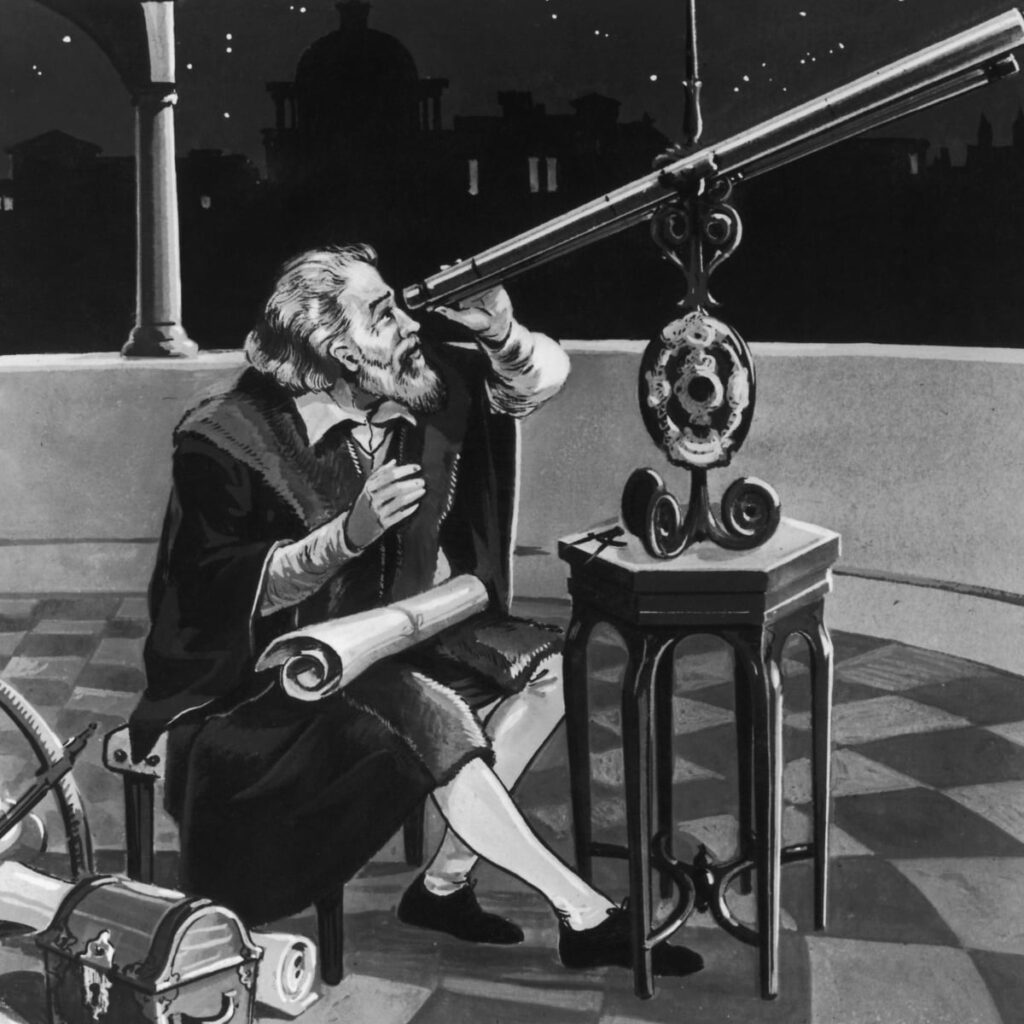
Since they could use this new spyglass to magnify distant objects, they would best use it to identify enemy ships and troops that were too distant to be seen by the naked eye.
Hans Lipperhey revealed his invention to the Dutch government since the Netherlands was embroiled in what was known as the ‘Eighty Years’ War’ with Spain at the time. Lipperhey never received a patent from the Dutch government for this invention.
This was because there were many disputes from other merchants who claimed to have invented the telescope; the most notable among them was Lipperhey’s competitor, Zacharias Janssen.
Galileo Galilei heard about the telescope invented by the dutchman and decided to construct his own. Galileo’s telescope was of much better quality.
With this telescope, Galileo could view the other planets in the solar system, stars, thousands of them, perhaps even millions, and discover a whole new universe beyond our present world.
Johannes Kepler improved the instrument’s design and called his invention the Keplerian telescope. The Dutchman produced the first reliable maps of the moon showing continents and oceans.
In 1665, Dutch physicist Christian Huygens developed what could be considered the best telescope instruments of the Renaissance. Huygens discovered Titan, the largest moon of the sixth planet, Saturn.
His observations later revealed Saturn’s ring system, a phenomenon that even Galileo Galilei could not comprehend. Huygens was also to see dark markings on Mars and speculated that there could be life on Mars.
The telescopes that were developed during the Renaissance were mainly refracting telescopes. They made use of lenses to collect and bring together starlight.
Astronomers now use giant telescopic mirrors installed on remote mountaintops to survey the universe around us.
The telescope remains one of the most remarkable inventions of all time and proved to be humankind’s gateway into astronomy.
The Printing Press
The printing press is likely the most important invention of the Renaissance period but one of the most revolutionary inventions in human history.
The invention of the printing press allowed the dissemination of vast amounts of information in an easier, faster, and more accessible manner.
Before the invention of the printing press, all works of writing and drawings had to be painstakingly done by hand. Several materials, like clay, papyrus, wooden and stone tablets, etc., were used to transcribe written works manually.
Scribes usually lived and worked in monasteries, and monasteries had unique rooms for transcribing called the Scriptorium. Inside the Scriptoriums, scribes worked meticulously and painstakingly in silence for long hours, copying manuscripts by hand.
Before the printing press, books were only exclusively owned by monasteries, educational institutions, or elite members of society.
A German goldsmith Johannes Gutenberg is credited with developing the first movable Printing Press in the year 1440 in Mainz, Germany. However, Gutenberg’s Printing press was not called ‘movable’ because it was easy to move around.
It was, as a matter of fact, notably quite heavy. It was named moveable because this printing press used movable blocks that formed letters and could be used to construct documents.
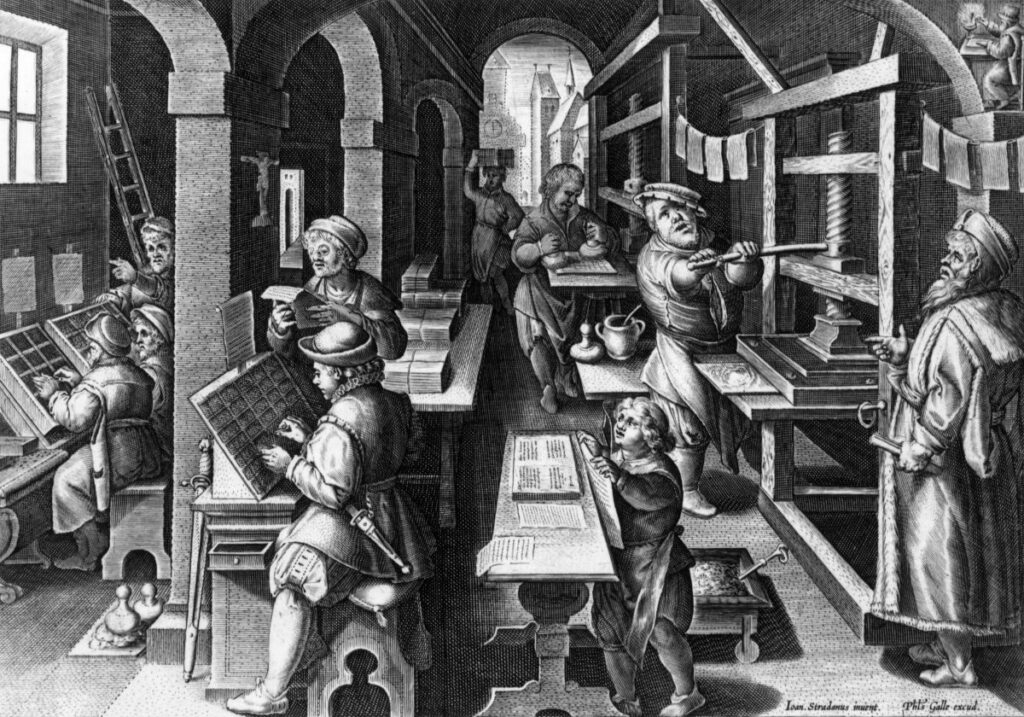
Gutenberg might have taken inspiration from earlier variations of a printing press method already in use in China.
Still, adding the alphabetic characters needed for European languages was a significant factor in its widespread success and usage across the globe.
Gutenberg printed the Latin bible to demonstrate the printing press’s effectiveness, which contained 1,286 pages.
He printed about 200 copies in 3 years, which was an impressively fast achievement at a time when the only way to duplicate manuscripts was to copy them by hand.
Gutenberg’s printing press technique was used for a long period and was adopted by many European cities. The printing press led to technological changes and economic advancements in the cities that adopted it.
It created jobs, attracted schools, students, teachers, and paper mills, and made it much easier to transport ideas over long distances.
Thanks to this novel invention, more books and papers could be printed, which was instrumental in making many people worldwide literate.

